This post may contain affiliate links. For more information, read my disclosure policy.
This post is a super resource all about cocoa powder for baking. If you’ve ever wondered why some recipes call for different kinds of cocoa powder, I am answering all of your questions in this post. Learn the difference between them, when you should use each kind and when you can substitute one for another.
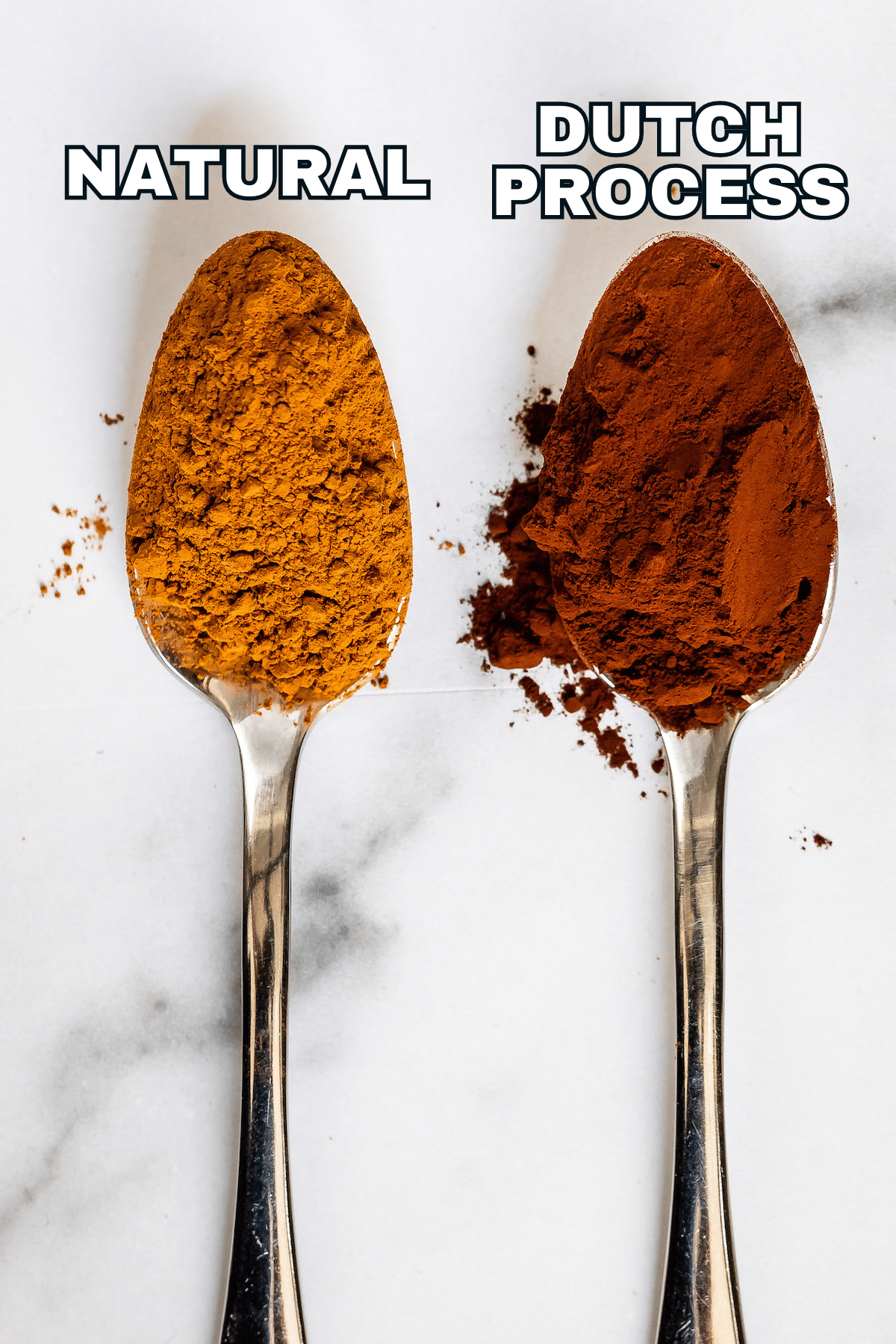
Table of Contents
- What is Cocoa Powder?
- Natural Cocoa Powder
- Dutch-Process Cocoa
- Can I Substitute Dutch-Process Cocoa for Natural Cocoa Powder?
- What about Black Cocoa Powder?
- Cocoa Powder Substitutions
- Recipes that use Natural Unsweetened Cocoa Powder
- Recipes you could use Dutch Process Cocoa in
- Recipes that use Hershey’s Special Dark Cocoa
What is Cocoa Powder?
Without getting too technical, cocoa powder is basically cocoa beans that have been processed so the fat (cocoa butter) is removed. What’s left is dried and then ground into a powder.
Cocoa powder is unsweetened and adds the rich, chocolaty flavor to chocolate desserts, but you probably already knew that part! So, why are there different kinds? That’s what we’re getting into today.
The two most common types are:
- Natural cocoa powder
- Dutch-process cocoa powder
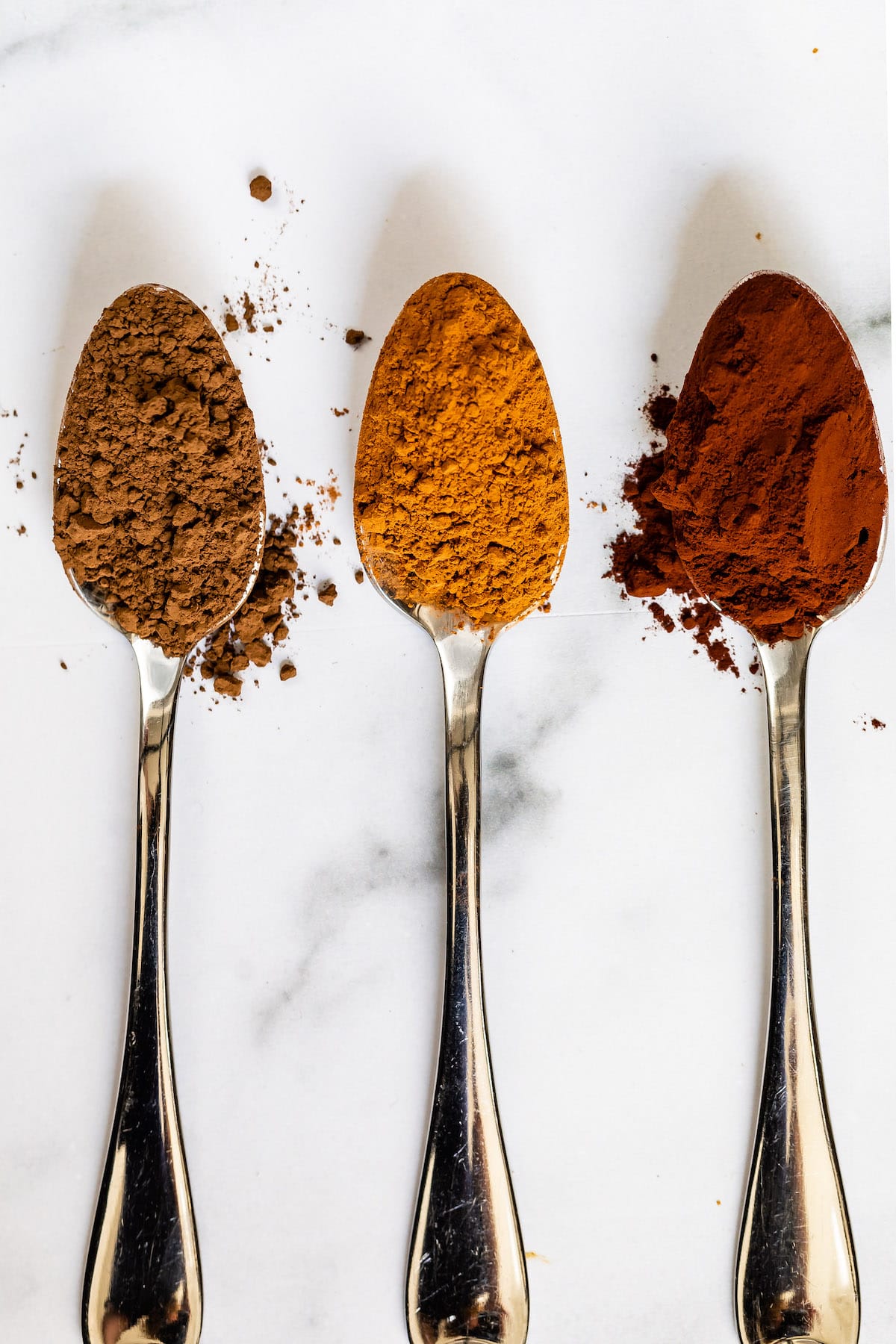
Natural Cocoa Powder
Natural cocoa powder is just the processed cocoa beans with the fat removed and dried. Hershey’s Natural Unsweetened Cocoa Powder is the most mainstream brand and the one I use the most. If you’ve ever taken a taste from the container you already know it’s bitter. When added to baked goods it produces a very rich chocolate flavor.
The bitterness is from the natural acid from the cocoa beans. Natural cocoa powder is used in recipes that have baking soda because the baking soda needs acid in order to activate, which is what causes leavening.
Dutch-Process Cocoa
When Dutch-process cocoa is made it goes through an additional processing step which reduces its acidity levels. So compared to natural cocoa powder it is less bitter and lower in acidity. The color is also lighter compared to natural cocoa.
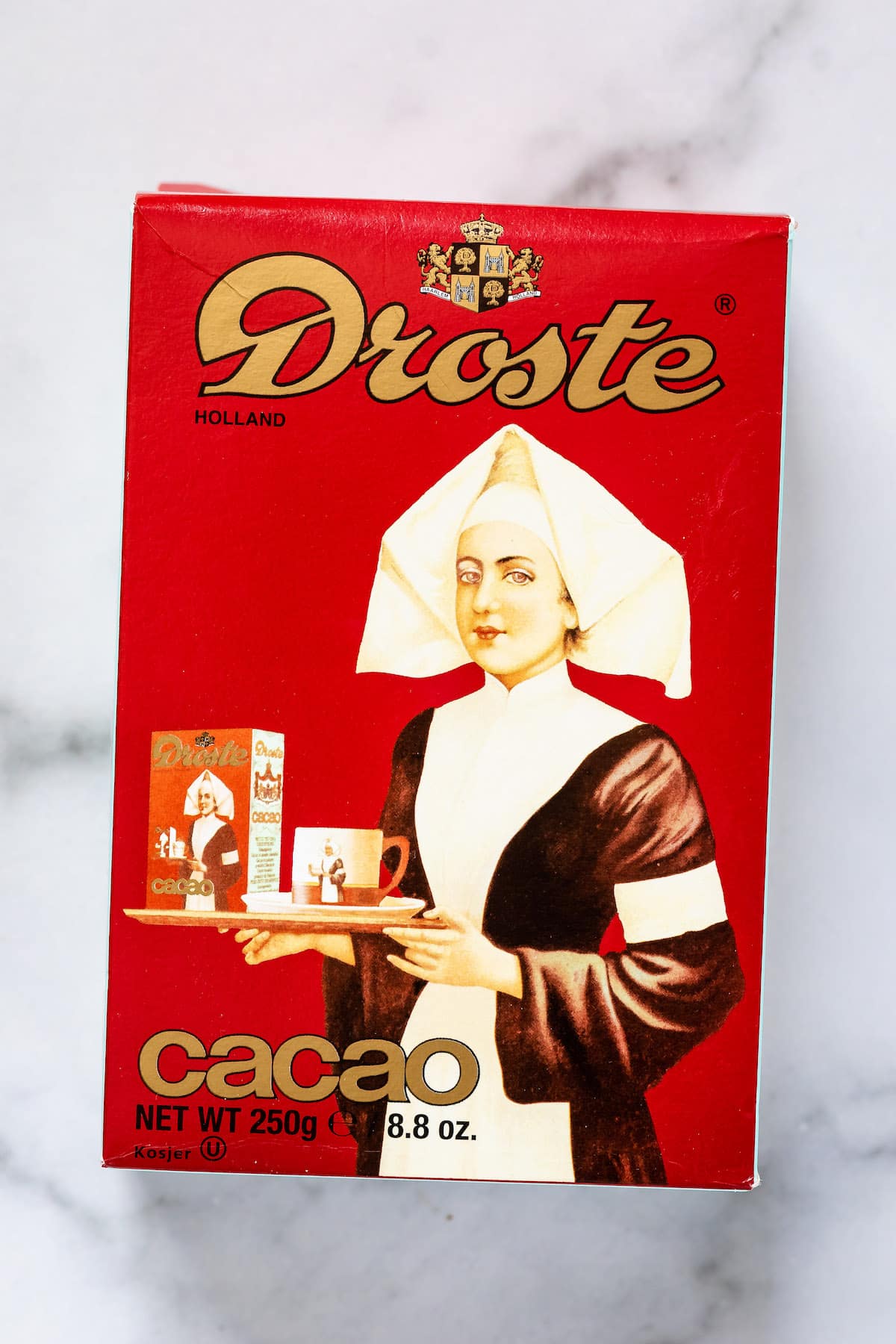
Can I Substitute Dutch-Process Cocoa for Natural Cocoa Powder?
First, things first. You should always use what’s listed in the recipe but in case it’s not specified, let’s break it down and ask these questions:
- Does the recipe have baking soda? If so, then you can’t replace Dutch-process with natural cocoa powder. Remember: baking soda needs acid in order to work probably (i.e. leaven) and natural cocoa powder has more acidity.
- Does the recipe only have baking powder? If yes, then you can use Dutch-process in place of natural.
- What if the recipe has both baking powder and baking soda? In this case, if the recipe calls for more baking powder than baking soda than you can use either Dutch-process or natural cocoa powder. If it calls for more baking soda than baking powder than use natural.
- What if the recipe doesn’t have any leavening agent? In this case, either will work! So, for things like frosting, ice cream, and hot chocolate or other chocolate drinks – basically anything without a leavener – you can use either.
What about Black Cocoa Powder?
I get asked about this one a lot so I wanted to mention it here. Black cocoa powder is an ultra-processed Dutch cocoa and it’s mainly used for color (like in Oreo cookies) and is usually mixed with another type of cocoa powder.
Black cocoa powder is really hard to find in stores – in fact, I tried to find some for a photo but couldn’t! That’s why I often use Hershey’s Special Dark cocoa powder instead of black cocoa powder because it’s less expensive and easier to find. I use it a lot for dark chocolate dessert recipes like my copycat Oreos.
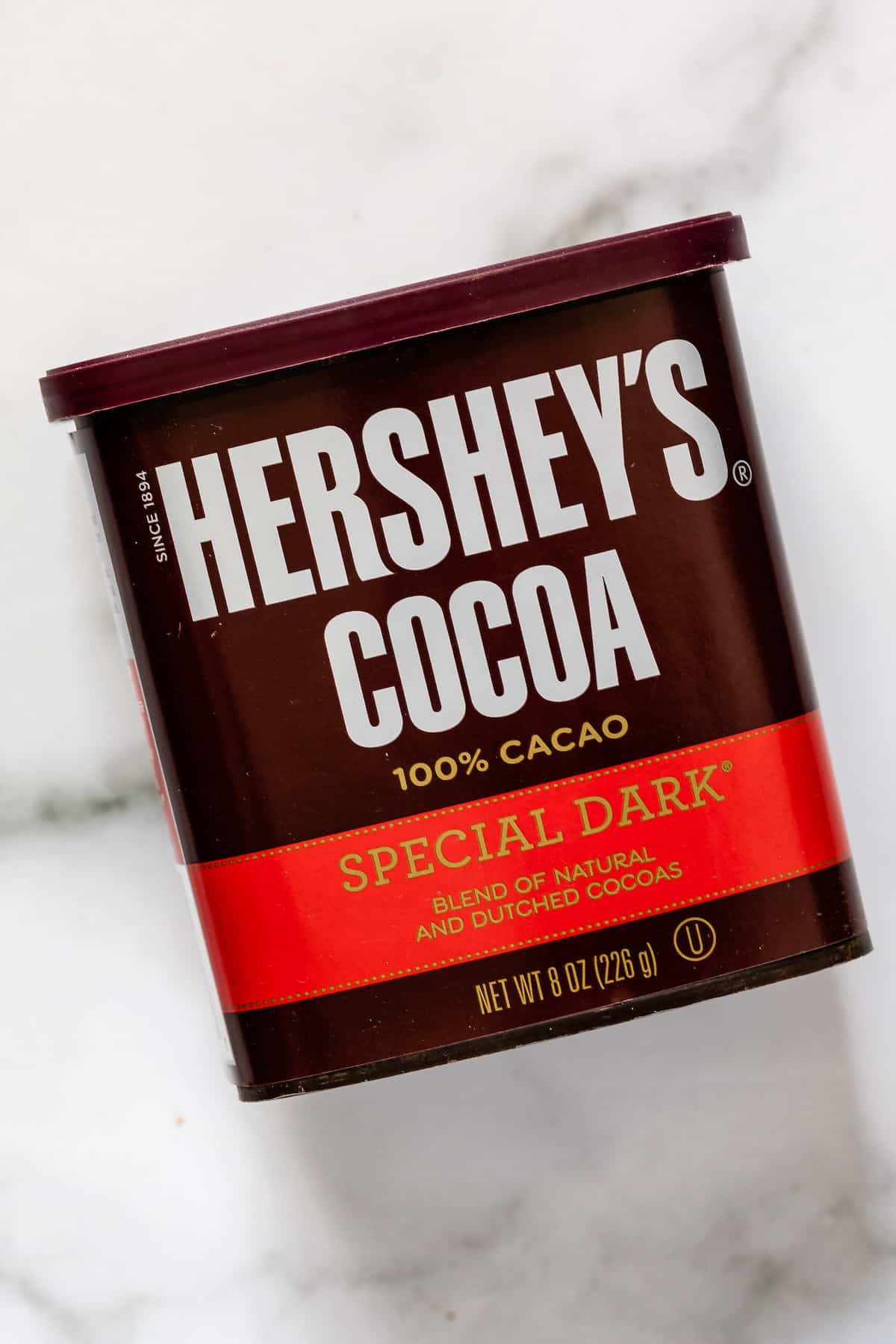
Cocoa Powder Substitutions
Some recipes call for cocoa powder and others call for baking chocolate and you can substitute one for the other. This is especially handy when you need to make a dessert but don’t have time to run to the store!
In a pinch, substituting cocoa powder and baking chocolate will totally work – with a few tweaks.
- 3 tablespoons of cocoa powder + 1 tablespoon of fat = 1 square of baking chocolate
- 1 tablespoon unsweetened cocoa powder + 2 teaspoons of sugar + 2 teaspoons shortening = 1 ounce of semisweet chocolate
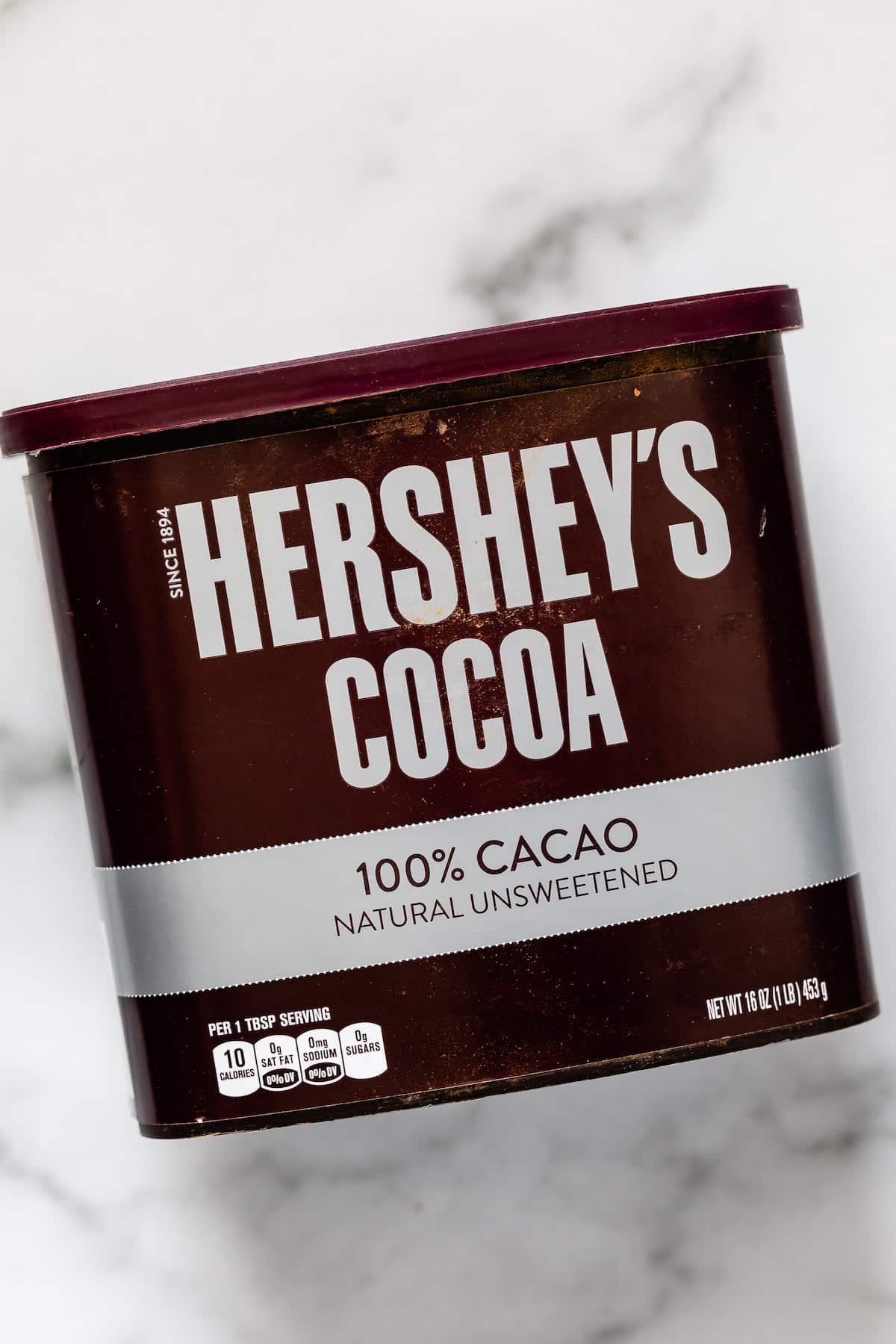
Recipes that use Natural Unsweetened Cocoa Powder
Recipes you could use Dutch Process Cocoa in
Recipes that use Hershey’s Special Dark Cocoa
Knowing the differences between different kinds of cocoa powder will make a big difference in your baking! I hope I’ve demystified it for you so you can make all of your chocolate desserts with confidence. Have more questions? Be sure to leave a comment and I’ll do my best to answer it!
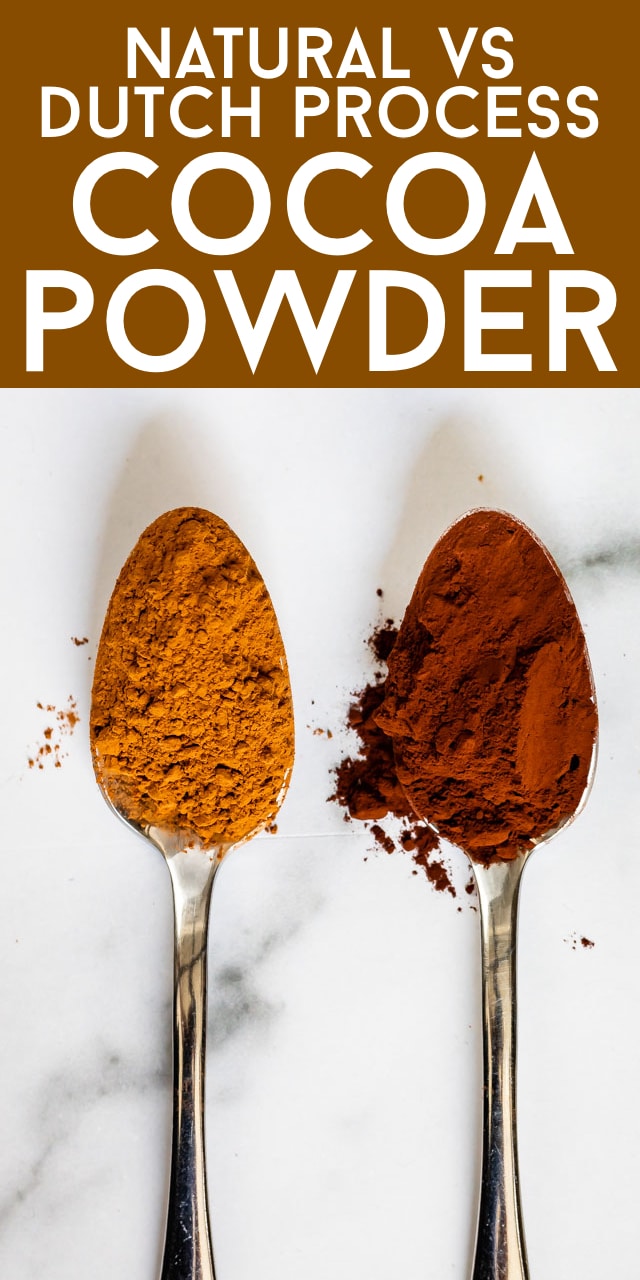
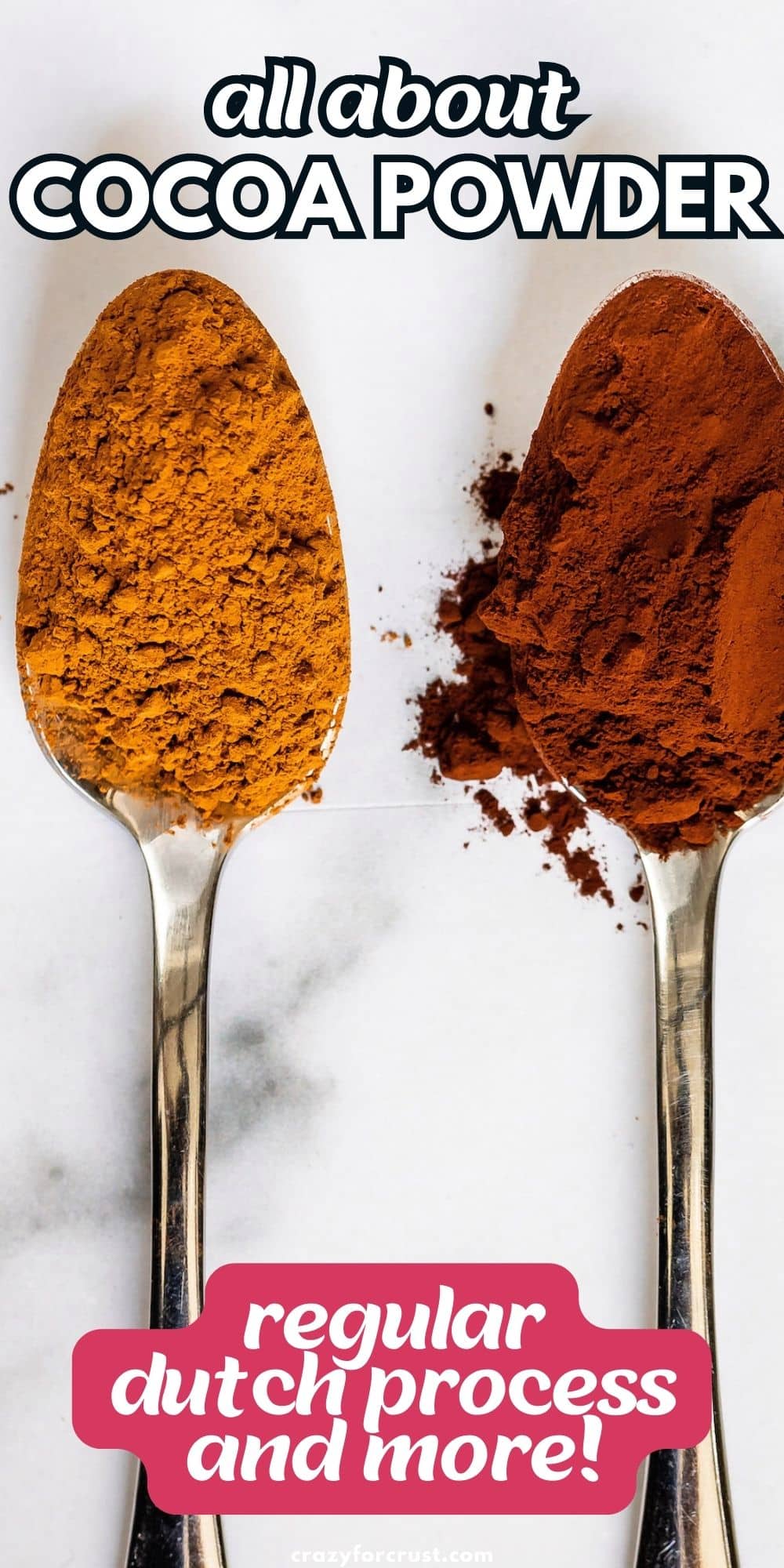
Very informative. I will keep a copy for further help. thank you